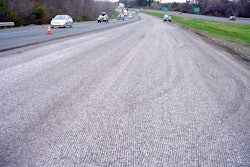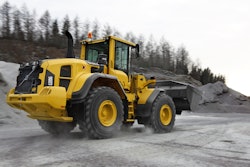A manufacturer’s CAFE is the fleet-wide average fuel economy, according to the National Highway Traffic Safety Administration (NHTSA). Separate CAFE calculations are made for up to three potential fleets: domestic passenger cars, imported passenger cars, and light trucks. The averaging method used is referred to as a “harmonic mean.” The regulatory language describes the calculation as: “the number of passenger automobiles manufactured by the manufacturer in a model year; divided by the sum of the fractions obtained by dividing the number of passenger automobiles of each model manufactured by the manufacturer in that model year by the fuel economy measured for that model.”
(For an analysis on the CAFE standards, see the September 2011 print edition or digital edition of Aggregates Manager magazine.)
The following numerical example from the NHTSA below illustrates the process. Assume that a hypothetical manufacturer produces four light truck models in 2004, where MPG means miles per gallon and GVWR means gross vehicle weight rating measured in pounds:
| Model | MPG | GVWR | Production Volume |
| Vehicle A | 22 | 3000 | 130,000 |
| Vehicle B | 20 | 3500 | 120,000 |
| Vehicle C | 16 | 4000 | 100,000 |
| Vehicle D | 10 | 8900 | 40,000 |
Because the Vehicle D exceeds 8,500 GVWR, it is excluded from the calculation. Therefore, the manufacturer’s light truck CAFE is calculated as:
=Average Light Truck Fleet Fuel Economy
The 2004 model year light truck CAFE standard is 20.7 miles per gallon, meaning the manufacturer is not in compliance, according to NHTSA. For further details on CAFE, including penalties for non-compliance and the formula for how they are determined, click here.
Source: National Highway Traffic Safety Administration









